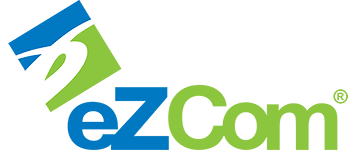What is an EDI 830?
The EDI 830 is an electronic document used to communicate a buyer’s long-term planning schedule and forecasted demand for products to suppliers. The transaction may also include firm orders (or releases), which specify exact quantities and delivery dates for upcoming shipments. It provides suppliers with the information they need to manage their production schedules, ensuring that goods are available when needed.
Key Components of an EDI 830
An EDI 830 typically contains the following elements:
- Buyer and Supplier Information: Contact details and identification numbers for both parties.
- Planning Schedule: Forecasted demand for products over a specific time period.
- Release Capability: Firm orders that detail specific quantities and delivery dates.
- Item Details: Product descriptions, quantities, and pricing.
- Shipping Instructions: Delivery methods, locations, and preferred shipping dates.
- Order Grouping Information: Indicating which orders can or should ship together.
- Changes or Adjustments: Modifications to previously sent forecasts or orders, if applicable.
Benefits of Using EDI 830
Implementing EDI 830 transactions offers several advantages:
- Improved Forecasting: By providing suppliers with long-term demand forecasts, businesses can ensure better alignment between supply and demand.
- Enhanced Production Planning: Suppliers can optimize their production schedules based on forecasted demand and firm orders.
- Reduced Lead Times: Suppliers can prepare for upcoming orders more effectively, reducing delays in the supply chain.
- Better Supplier Relationships: Transparent communication of future needs fosters stronger partnerships between buyers and suppliers.
How the EDI 830 Works
The EDI 830 transaction set follows a structured process to facilitate the exchange of demand forecasts and planning schedules:
- Creation: The buyer’s EDI system generates the EDI 830 document based on future demand forecasts and firm orders.
- Transmission: The EDI 830 is securely transmitted to the supplier via an EDI network.
- Reception: The supplier’s EDI system receives and processes the EDI 830, interpreting the planning schedule and release information.
- Production Planning: The supplier adjusts their production schedule according to the forecasted demand and firm orders.
- Fulfillment: When firm orders are included, the supplier processes these orders and prepares shipments accordingly.
- Confirmation: Suppliers may send back an acknowledgment or confirmation via an EDI 997 Functional Acknowledgment or EDI 855 Purchase Order Acknowledgment.
EDI 830 and Your Business
Implementing the EDI 830 transaction set can significantly enhance your supply chain management, particularly in industries where long-term demand planning is essential, such as automotive, retail, and manufacturing. By sharing forecasted demand with your suppliers, you can achieve greater efficiency, reduce lead times, and improve overall supply chain performance.
At eZCom Software, we specialize in providing comprehensive EDI solutions tailored to your business needs. Our platform ensures seamless integration with your existing systems, enabling you to fully leverage the benefits of EDI 830 transactions.
FAQ: Understanding the EDI 830 Planning Schedule with Release Capability
- What is an EDI 830?
The EDI 830 is an electronic document used by buyers to communicate their long-term planning schedules and forecasted demand to suppliers. It may also include firm orders for upcoming shipments.
- How does the EDI 830 improve production planning?
The EDI 830 improves production planning by providing suppliers with forecasted demand and firm orders, allowing them to optimize their production schedules and reduce lead times.
- What information is typically included in an EDI 830?
An EDI 830 typically includes buyer and supplier information, planning schedules, release (firm order) information, item details, shipping instructions, and any changes or adjustments to previously sent forecasts.
- How does the EDI 830 benefit my business?
Implementing the EDI 830 can benefit your business by improving forecasting accuracy, enhancing production planning, reducing lead times, and fostering better communication with suppliers.
- What is the process for sending an EDI 830?
The process for sending an EDI 830 involves the following steps:
- Creation: The buyer’s EDI system generates the EDI 830 document.
- Transmission: The EDI 830 is securely transmitted to the supplier.
- Reception: The supplier’s EDI system receives and processes the EDI 830.
- Production Planning: The supplier uses the forecasted demand and firm orders to plan their production.
- Fulfillment: The supplier processes and ships firm orders if included.
- Can the EDI 830 be customized for my business needs?
Yes, the EDI 830 can be customized to include specific information relevant to your business, ensuring alignment with your forecasting and production planning processes.
- How does the EDI 830 integrate with existing business systems?
At eZCom Software, we provide comprehensive EDI solutions that integrate seamlessly with your existing business systems, enabling smooth implementation and operation of EDI 830 transactions. This integration ensures that you can fully leverage the benefits of EDI without disrupting your current workflows.


